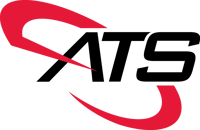Maintaining consistent employee attendance is crucial for a thriving workplace. Unfortunately, when employees don’t adhere to time and attendance policies, it takes a toll on productivity and revenue.
To address this challenge, effective strategies are essential. Utilize your Oracle Cloud Time and Labor solution as a valuable tool to resolve time and attendance issues within an organization. .
Let’s explore key strategies to improve employee compliance with your company’s time and attendance policy.
Establish a Clear Policy
Set clear limits on how many times staff can be absent or late in your time and attendance policy. Consider unforeseen circumstances and set a threshold for how often you will consider them as acceptable reasons for tardiness or absence.
Ensure new hires understand the policy. Review policy updates at staff meetings to ensure everyone knows the current policy.
Clarity in Scheduling
Good employee scheduling is important for managing work hours and following time and attendance policies. Ambiguity in schedules leads to misinterpretation and inadvertent policy violations.
To enhance clarity and communication, integrate your Oracle software with a time clock system, such as TimeCom from Accu-Time Systems. Combining Oracle with ATS's time recording and management system allows for sharing data between the systems, enhancing scheduling clarity. Here are two key ways:
Improved Schedule Forecasting
The time clock collects the attendance data. It then sends it to Oracle. With actual and scheduled work hours combined, managers and can run reports comparing them. This on-going analysis helps them improve their scheduling forecasting. Thus, they can provide more predictable schedules for employees.
Effective Coaching
Effective coaching can help shape employee behavior through communication. It highlights areas of excellence and areas needing improvement.
When an employee has attendance issues, engage with them to understand the underlying causes. Coaching is about providing support as well as improvement. Effective communication is key. Below are some helpful guides to being an effective coach:
- Explain the problem in detail, illustrating its impact on the team. Highlight the employees' value to the company and to their colleagues.
- Investigate the root causes. Scheduling misunderstandings or external factors beyond their control may be the cause.
- Identify any personal or professional barriers limiting their performance and work collaboratively to address them.
- Demonstrate confidence in the employee's commitment to solving the problem by seeking their input and ideas.
- Establish a written action plan outlining the steps the employee, management, and HR professionals will take to resolve the issue.
- Set a follow-up date to evaluate employee progress and address any emerging issues. Gather feedback from the team member and consider their perspective.
Optimizing Time Management and Communication with Accu-Time Systems and Oracle
Effective communication enables you to enforce your time and attendance policy. But you need strong tools to support your communication, like Accu-Time Systems' time and attendance software “TimeCom” integrated with your Oracle Cloud Time and Labor environment.
Additionally, a TimeCom and Oracle Time and Labor eco-system improves operations and workforce management by:
- Minimizing time theft through buddy punching
- Automating management of time off requests
- Ensuring time data accuracy through automated collection of hours worked instead of time card entries
- Improving compliance with wage and hour regulations
- Streamlining approval of time and management of submitted time
Proper communication coupled with Accu-Time Systems’ timekeeping systems can help you enforce your time & attendance policy and improve productivity.
Get in touch with our solution consultant today for all your time and labor needs.




